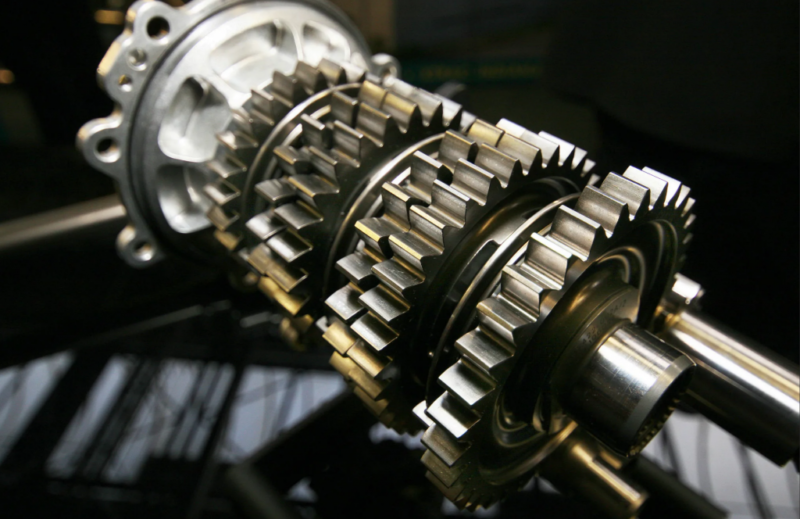Introduction
The Dodge 42RE transmission is a popular automatic transmission used in various Dodge vehicles. While it is known for its durability and smooth shifting, like any mechanical component, it can experience problems over time. In this article, we will explore common problems associated with the Dodge 42RE transmission, discuss the symptoms and signs to look out for, understand the potential consequences of ignoring these issues, and provide an overview of the repair costs involved.
Common Problems
The Dodge 42RE transmission, despite its reliability, can encounter a few common problems that owners should be aware of. These issues can arise due to various factors, including wear and tear, lack of maintenance, or manufacturing defects. Here are some of the most frequently reported problems:
1. Gear Slippage

One of the primary issues faced by Dodge 42RE transmission owners is gear slippage. This problem occurs when the transmission fails to stay in the desired gear, leading to a loss of power and acceleration. Gear slippage can be caused by worn-out clutch plates, a faulty torque converter, or low transmission fluid levels.
2. Delayed Engagement
Another common problem is delayed engagement, where the transmission takes longer than usual to shift into gear after the driver selects a specific position. This can be frustrating and potentially dangerous, especially when trying to accelerate quickly. Delayed engagement can be caused by a malfunctioning solenoid, a worn-out clutch, or a faulty valve body.
3. Overheating
Overheating is a serious problem that can lead to significant damage to the transmission if not addressed promptly. This issue can occur due to a malfunctioning cooling system, low transmission fluid levels, or excessive towing or hauling. Overheating can cause the transmission fluid to break down, leading to poor lubrication and increased friction within the transmission.
Symptoms and Signs
Identifying the symptoms and signs associated with Dodge 42RE transmission problems is crucial for early detection and prevention of further damage. Here are some common indicators that may suggest transmission issues:
1. Transmission Fluid Leaks
One of the most apparent signs of a transmission problem is the presence of fluid leaks. If you notice red or brown fluid pooling underneath your vehicle, it is likely a transmission fluid leak. Leaks can occur due to worn-out seals, gaskets, or damaged transmission lines.
2. Strange Noises
Unusual noises coming from the transmission, such as grinding, whining, or clunking sounds, can indicate internal damage or worn-out components. These noises should not be ignored, as they can worsen over time and lead to more severe transmission problems.
3. Difficulty Shifting Gears
If you experience difficulty shifting gears or notice a delay when shifting, it could be a sign of a transmission problem. This can manifest as a hesitation, jerking motion, or slipping sensation when changing gears. It is essential to address this issue promptly to prevent further damage.
Consequences
Ignoring Dodge 42RE transmission problems can have severe consequences, both for the vehicle’s performance and the owner’s wallet. Here are some potential consequences of neglecting transmission issues:
1. Complete Transmission Failure
Continued operation of a faulty transmission can lead to complete transmission failure. This can result in a complete loss of power to the wheels, rendering the vehicle inoperable. Replacing an entire transmission is a costly repair that can significantly impact your finances.
2. Reduced Fuel Efficiency
A malfunctioning transmission can cause the engine to work harder, leading to decreased fuel efficiency. This means you’ll end up spending more money on fuel, as the vehicle will require more power to perform the same tasks. Addressing transmission problems can help maintain optimal fuel economy.
3. Safety Risks
Transmission problems can pose safety risks, especially if they affect the vehicle’s ability to shift gears smoothly or accelerate properly. Sudden gear slippage or delayed engagement can lead to accidents or dangerous situations on the road. It is crucial to prioritize the repair of transmission issues to ensure your safety and the safety of others.
Repair Cost
The cost of repairing a Dodge 42RE transmission can vary depending on the extent of the damage and the specific components that need replacement. Here is a general overview of the potential repair costs involved:
| Repair | Cost Range |
|---|---|
| Transmission Fluid Change | $100 – $200 |
| Transmission Filter Replacement | $150 – $300 |
| Torque Converter Replacement | $500 – $1,000 |
| Clutch Plate Replacement | $800 – $1,500 |
| Valve Body Replacement | $500 – $1,000 |
| Complete Transmission Replacement | $2,000 – $4,000+ |
It is important to note that these cost ranges are approximate and can vary depending on factors such as the vehicle model, labor charges, and location. Consulting with a qualified mechanic or transmission specialist is recommended to get an accurate estimate for your specific situation.
Conclusion
Being aware of the common problems, symptoms, and consequences associated with the Dodge 42RE transmission can help Dodge vehicle owners take proactive measures to address any issues promptly. Regular maintenance, timely repairs, and attentive driving can contribute to a smoother and more reliable transmission performance. Remember, addressing transmission problems early on can save you from costly repairs and ensure a safer driving experience.
